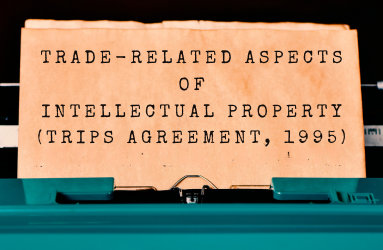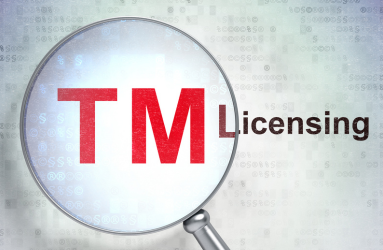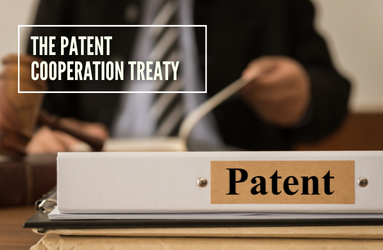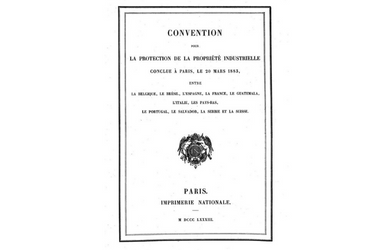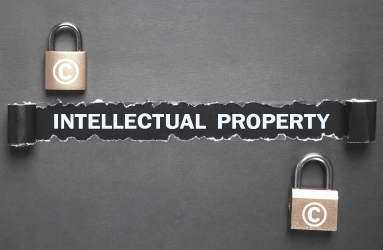Intellectual Property and the Role of Trade Secrets

What is a Trade Secret?
In the world of intellectual property, trade secrets are essentially a right of ownership connected with information that demonstrates specific characteristics:
- Confidentiality: The information must be held in strict confidence.
- Competitive Edge: It should offer a distinct advantage in the competitive landscape.
- Commercial Value: The information holds substantial commercial worth.
- Limited Knowledge: Its awareness is confined to a select group of confidants.
Despite the clandestine nature of trade secrets, it's noteworthy that they can be transacted through sales and licenses, typically facilitated by the implementation of confidentiality agreements.
Organizations today are striving hard to carve themselves a unique identity in the highly competitive marketplace. They are doing this by using techniques like improved branding, cost-effective products, or simplified production processes to outperform their competitors.
Therefore, it's only logical that if they possess a coveted "secret" contributing to their advantage, they will take every measure to safeguard and keep it under wraps.
When it comes to intellectual property rights, a legal framework is in place to empower these companies in galvanizing their defense of trade secrets, ensuring the preservation of their invaluable competitive advantage. Hence, in this article we will be demystifying and streamlining the concept of trade secrets in the realm of intellectual property protection. We will delve into its core, examining its essence, functionality, as well as weighing its benefits and drawbacks.
What Qualifies as a Trade Secret?
The representation of what constitutes a trade secret is rather varied. It may contain elements that are freely available in the public domain, but the sum of its parts converts it into a confidential entity. Alternatively, it could include technological information solely possessed by the right holder, including:
- Formulas
- Patterns
- Compilations
- Programs
- Devices
- Methods
- Techniques
- Processes
However, it is important to note that legal frameworks may reach different conclusions regarding the qualifying of objects as trade secrets. The criteria and legal definitions for trade secrets may vary by jurisdiction.
What Kind of Protection does Trade Secrets Provide?
Typically, any company found guilty of the unauthorized acquisition, distribution, and use of a trade secret in a manner that violates fair business standards, such as through contract breaches or corporate espionage, can face criminal penalties in court. It is crucial to note that the specific legal repercussions may vary depending on the region's legal system and the particular circumstances of each individual instance.
Why are Trade Secrets Necessary?
At its core, strong protection of intellectual property rights promotes the development of new ideas and products, hence driving economic progress. Trade secrets, like patents and trademarks, share a shared underlying goal. They try to promote and incentivise fair competition while discouraging anti-competitive corporate activities. Trade secrets are recognized as a critical component in satisfying an economy's supply and demand dynamics.
Business Rumination for Trade Secrets
At its core, there exist two fundamental categories of trade secrets:
- Trade secrets holding valuable information that doesn't meet the criteria for patentability.
- Trade secrets deemed patentable, eligible for submission as a patent application.
In the latter case, the owners of these rights must make a critical decision: whether to patent their trade secret, which would reveal previously hidden knowledge to the public.
Advantages of Trade Secrets
- Indefinite Protection Duration: A corporation can keep a trade secret indefinitely as long as it is not divulged to the public. In contrast, patents have a limited protection duration that varies by location and must be renewed.
- No Registration Fees: Unlike patents, trade secrets have no registration fees.
- Immediate Protection Enforcement: Trade secret protection is effective immediately, providing prompt safeguards. Patents, on the other hand, take time after public disclosure to become effective, allowing for potential objections from other parties.
Disadvantages of Trade Secrets
Unlike patents, which provide solid and substantial protection once in effect, trade secrets come with several caveats, despite their advantages. The most notable among these are:
- Discovery by Competitors: If a competitor uncovers the trade secret through reverse-engineering or public observation, they are entitled to use it.
- Potential Patenting by others: Another party can patent the trade secret if they discover it through legitimate means.
- Enforcement Challenges: Trade secrets are generally challenging to enforce, and unlike patents, the definition of what qualifies as a legitimate trade secret varies from region to region.
- Public Disclosure Impact: If a trade secret becomes public and is widely used, it may lose its eligibility as a trade secret.
- Lack of Exclusive Rights for Third Parties: Unlike patents, no exclusive rights are granted to third parties for commercial use.
- Difficulty in Selling and Licensing: Trade secrets pose greater challenges when it comes to selling and licensing compared to patents.


When is a Trade Secret more Beneficial?
When considering whether to protect a production methodology as a trade secret, the decision is often made on a case-by-case basis. Factors contributing to the selection of a trade secret as the best option include:
- Non-Patentability: When the production methodology is not eligible for patent protection.
- High Probability of Secrecy: When there is a high likelihood that the trade secret can be effectively kept confidential for an extended period.
- Resistance to Reverse-Engineering: When it is unlikely that the trade secret can be reverse-engineered or legitimately reproduced.
- Limited Patent Worth: When the secret does not hold sufficient value to warrant registration as a patent.
- Focus on Manufacturing: When the secret pertains to the manufacturing process rather than the product itself, as the latter is more susceptible to reverse engineering.
Trade Secret Precautionary Measures for Businesses
Given the irregularity of trade secret enforcement compared to other types of intellectual property protection, businesses must take proactive actions to secure their trade secrets, especially when patenting may not be deemed worthwhile. Common preventive strategies include:
- Restricted Knowledge: Limiting access to the trade secret to a select number of individuals.
- Controlled Access: Implementing restrictive measures and physical security to control access to the secret.
- Document Access Control: Exercising control over access to critical documents.
- Robust IT Security: Enforcing strong information technology security protocols.
- Non-disclosure Agreements (NDA): Executing NDAs with employees and business partners to prevent the disclosure of company information.
- Non-compete Agreements (NCA): Entering into NCAs with contractors, employees, and consultants, restricting their ability to enter into competition after the conclusion of their service.
What are the Rights of Trade Secret Holders?
In civil, commercial, administrative, and criminal law, the majority of countries provide legal remedies through particular laws or anti-unfair competition measures.
When a party is determined to have illicitly acquired a trade secret, the trade secret holder is entitled to seek compensation in the form of financial damages. Moreover, certain regions go a step beyond, either by imposing an injunction on the offending party or by meting out criminal penalties.
What are some Notable Legal frameworks for Trade Secret Protection?
As per WIPO, several international agreements are currently in effect with the aim of bolstering trade secret protection among member states.
These include:
Paris Convention: Aligned with Article 10b is of the Convention for the Protection of Industrial Property, participating member states are expected to offer effective protection against unfair competition. However, it's noteworthy that the definition of a trade secret within this context does not extend beyond safeguarding against unlawful and dishonest business practices.
TRIPS Agreement: According to a specific article in this agreement, trade secret protection can be granted if certain conditions are met:
- The nature of the information kept secret is generally unknown or inaccessible beyond those authorized to regularly deal with it.
- It holds commercial value due to its confidentiality.
- The secret has been subjected to reasonable security precautions by the holder to protect it.
Patent and Trade Secret Symbiosis
Though patents and trade secrets may initially seem like distinct options, in reality, they function more like two sides of the same coin, complementing each other. During the initial stages of patenting a product, trade secrets come into play, offering flexibility in the early phases of the innovation process. This allows innovators to fine-tune their invention until it reaches its full realization for the patenting stage.
Conclusion
Trade secrets are essential to intellectual property, as they provide unlimited protection, cost savings, and rapid enforcement. Businesses weigh the benefits and downsides, carefully selecting when to rely on them.
For tailored guidance on navigating the complex terrain of trade secrets and intellectual property, turn to Abou Naja Intellectual Property. Our legal experts offer strategic counsel and proactive measures to safeguard your innovations. Trust us to enhance, protect, and manage your intellectual property portfolio with precision. Get in touch with us at connect@abounaja.com for a complimentary consultation.



















